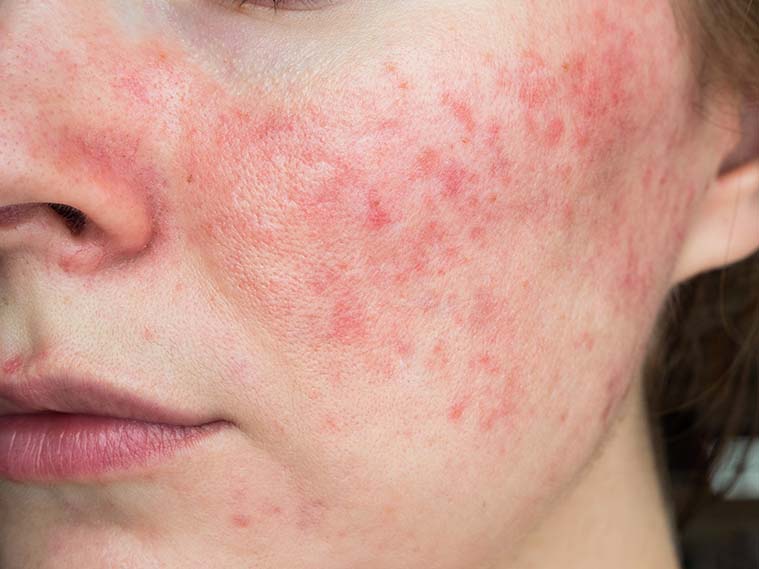Jump To
 Promptly seeking treatment for rosacea in Boston is imperative to manage its symptoms and prevent serious complications. Rosacea is more common than most think, and it is usually misdiagnosed.
Promptly seeking treatment for rosacea in Boston is imperative to manage its symptoms and prevent serious complications. Rosacea is more common than most think, and it is usually misdiagnosed.
This skin condition typically affects the face and flares up randomly, lasting for weeks or months at a time. There is no cure, but proper treatment can reduce its symptoms and severity.
What Is Rosacea?
Rosacea is a chronic skin condition marked by pus-filled bumps. It commonly affects the nose, cheeks, and forehead. The skin condition usually develops around the age of 30, and it is more common in women than in men.
There are four subtypes of rosacea (ocular rosacea, papulopustular rosacea, erythematotelangiectatic rosacea [ETR], and phymatous rosacea), categorized based on symptoms, and these types may occur simultaneously. The cause of rosacea has not yet been determined.
Symptoms of Rosacea
If you are experiencing persistent symptoms like redness, flushing, visible veins, swollen bumps, a burning sensation, dry skin, eye problems, or thickened skin around the nose, it is best to seek diagnosis; these symptoms may be indicative of rosacea.
Immediate treatment should be administered if you have previously been diagnosed with rosacea and have started to experience blurred vision, eye pain, or sensitivity to light.
Your Consultation
During your consultation, a physical examination of the skin and eyes will be performed to diagnose your skin condition. Additional tests may be ordered to rule out other conditions. You will also be asked about your symptoms and their frequency or cycle of occurrence.
A review of your medical history will be conducted to assess your compatibility with rosacea treatment options. Finally, an effective course of treatment will be recommended.
Treatments for Rosacea
There are a number of treatment options for rosacea. Skin creams can be prescribed to reduce inflammation and reduce flushing. Topical antibiotics or oral medications may be recommended to manage a number of symptoms, including acne, flushing, and redness.
Eye drops may be prescribed to bring ocular rosacea under control. Laser therapy can be used to reduce the appearance of enlarged blood vessels.
The Treatment Process
The details of the treatment process will vary depending on the chosen treatment approach. Treatment may last for several weeks or as long as four months.
You may only have to apply ointments and creams on your target areas. If oral medications prescribed, they must be taken as directed. Eye drops are prescribed for use for a few days to a week.
If initial treatments do not work, different combinations may be considered to find the course of treatment that works effectively for you.
After Treatment
To prevent further flare-ups of rosacea, you will be given specific recommendations to prolong your remission and keep the symptoms manageable. Avoiding triggers, such as alcohol or spicy foods, can help prevent the skin condition from coming back. Minimizing exposure to wind or sun can also help. Managing stress is another way to keep rosacea at bay.
Cost of Rosacea Treatments
The cost of treatments for rosacea is highly dependent on the personalized treatment plan developed for you. The overall price will be impacted by the type of medication prescribed and length of application.
Contact Us
We can help find a definitive treatment for symptoms of rosacea in Boston so you can improve your quality of life. Contact Westford Dermatology to schedule your consultation today.
Your procedure will be performed by board-certified dermatologist Dr. Steven Franks in Boston, MS.





